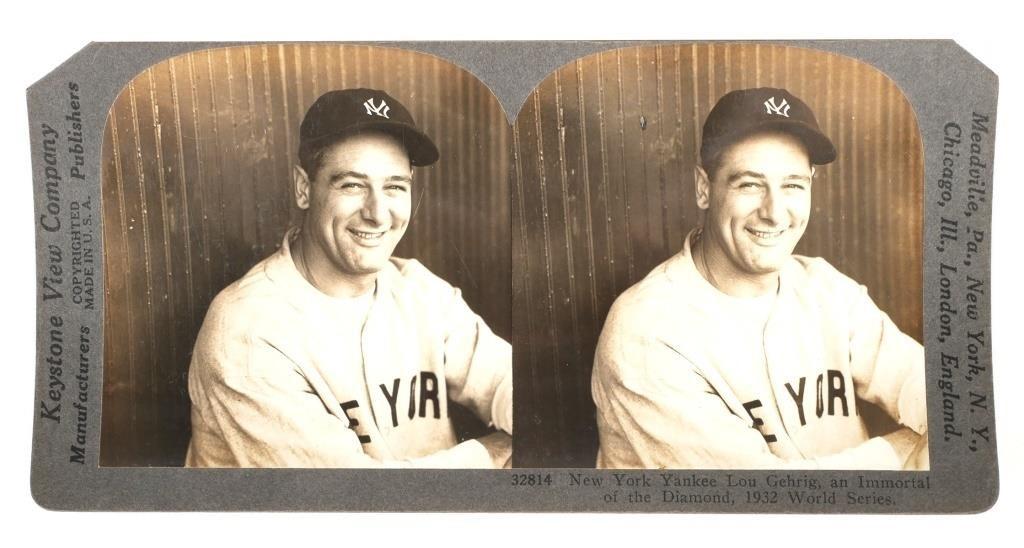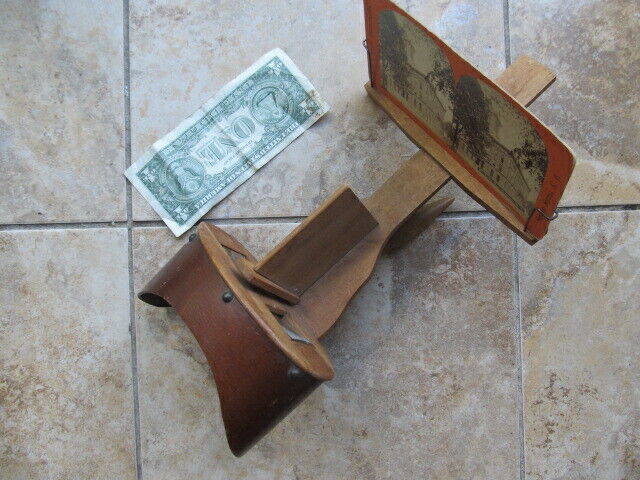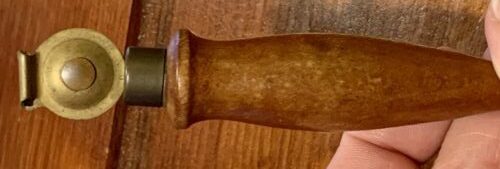#Victorian #Stereoscopes #Revival #Among #Collectors #WorthPoint

In the 1800s, an early form of virtual reality captivated the world. A small wooden contraption called a stereoscope, accompanied by curious double photographs, immersed its viewers in a three-dimensional world of exotic, far-off places. Even alongside today’s advanced technology, this simple gadget is undergoing a robust revival among collectors and enthusiasts longing for a glimpse of the past rather than the future.
What Is a Stereoscope?
Because the stereoscope’s key lies in how our brain and eyes interpret its curious photo cards, let’s journey back to 1838, when Charles Wheatstone, a British scientist, discovered a weird visual illusion. He found that each of our eyes sees things from a slightly different perspective. For example, imagine someone drawing a tree or other simple object twice from two similar angles. At a close distance, our eyes and brain would interpret the two images together in a single three-dimensional form. Wheatstone crafted a viewing device to prove his point, thus inventing the original stereoscope. The gadget featured a wood base with a viewing lens covered by tin and a slide to insert the double stereo cards, also known as stereographs. Behind the lens, the double photos merged into a vivid, almost live image.
Ten years later, the stereoscope received an upgrade that coincided with the invention of the photograph. Another scientist, David Brewster, created an easy-to-use handheld stereoscope that became an almost overnight sensation. After complaints of dizziness and headaches from looking at two images with each eye, two more scientists—Oliver Wendell Holmes and Joseph Bates—changed the viewing distance and made the device lighter to hold. The stereoscope had truly arrived as a new sensation.

According to Smithsonian magazine writer Clive Thompson, new businesses, like the extant London Stereoscopic Company, sold inexpensive devices and commissioned photographers to travel the world snapping photos. “In 1856, the firm offered 10,000 views in its catalog,” Thompson wrote, “and within six years they’d grown to one million.”
Thompson noted that because the photos cost only pennies, excited fans snapped up shots of almost everything, from iconic sites to comedy scenes and close-ups of famous artworks. Wealthy families posed for stereoscopic portraits. While Europeans viewed ancient sites and art, early Americans virtually traveled to places like Yosemite and the Grand Canyon. Publishing companies—namely Keystone and Underwood & Underwood—sold billions of stereo cards for around twenty to fifty cents each.
While the stereoscope craze had weakened by the early 1930s, it never completely disappeared. The Keystone Company, for example, pivoted its brand toward the education sector by selling stereography cards to local schools. More modern stereoscopes re-emerged in the 1950s with the help of 35mm slide film cameras. Companies like Kodak and Realist produced mounted slides for stereo viewer use. And the View-Master, invented as an adult tool in the 1930s, quickly became a popular children’s toy that is still sold today.
Selling and Collecting Stereoscopes
I only discovered the stereoscope at a recent flea market, where a vendor presented thousands of stereo card photographs mounted on cardboard. After he gave me a brief tutorial, I had to take a few stacks to resell, especially after learning how popular they were.
If the vendor’s cards are in haphazard stacks, it pays to pore over them and organize a collection or theme to sell. For example, I found about twenty cards that told the story of a wedding, from the first date to settling into a new home, and they sold quickly in my eBay shop. I rely on popular keywords, including “stereo cards,” “stereo viewer cards,” and “stereo views” in my listings.
From my limited experience and research, a stereo card’s condition and theme play a substantial part in its value. Look for viewer cards showing iconic sites. For example, a collection of forty stereo cards from the first race at the Indianapolis Motor Speedway in 1909 sold for $10,000 in 2017. An antique stereo view of New York’s Sing Sing prison sold for $170.39 in 2022. Many individual cards in decent condition and with an exciting theme can sell for $10–$20. Additionally, buyers on Etsy seem willing to pay more overall, especially if you present attractive product images and create an artistic (and, of course, friendly) selling experience.
I checked the WorthPoint Price Guide and found that antique and vintage stereoscopes have retained their value, especially if they are in good condition and come with the original case.

The Stereoscope Obsession Continues
What does all this say about stereoscopes? It shows that this device has a devoted following and solid customer base, even with competition from high-tech virtual reality gadgets on the market. So, search and thrift accordingly.
Because it pays to become marginally knowledgeable about the product you’re selling, I rounded up a few websites and blogs offering expert information about stereoscopes and viewer cards: VintageViewers, The Stereoscopy Blog, Jeff Polston’s Stereoscope Page, and The Stereosite. The WorthPoint Dictionary has informative articles on identifying and valuing stereoscopes, stereographs, and View-Masters as well.
Additionally, artists are making new stereo cards for antique and vintage stereoscopes. Evan Lindquist of Arkansas has a page on his website devoted to a collection of vibrant stereo cards he created with a 1931 Leitz Stereoly attachment on a 2004 digital camera. He noted that the cards are made to be viewed through the 19th-century Holmes Stereoscope.
Stereoscope Artistry
The stereoscope combines art and story within its simple yet irresistible confines. British photographer Jim Naughten revealed in a 2022 blog post how he felt after looking through a stereoscope for the first time:
“I think I nearly fell off my chair when I first saw the images in 3-D,” he said. “I was entranced, and utterly smitten. They are so beguiling and enjoyable to view. There appears to be an intimate connection with lost worlds.”
Between excursions to hunt for antiques and vintage décor, Lynda Houston is busy restoring her 1950s cottage in Cincinnati, Ohio. She and her partner, Dave Beck, operate TheRustInPeaceShop on Etsy.
WorthPoint—Discover. Value. Preserve.




